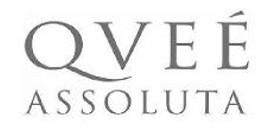The Board of the Appeal of the Italian Trademark and Patent Office (UIBM) has reiterated that, in the crowded wine sector, confusion between trademarks is less likely to occur even when certain similarities are present due to the high level of consumer attention.
La Pala v Soc Agr Tenuta La Presa
The winery La Pala, owner of the Italian word trademark ASSOLUTO for alcoholic beverages, filed an opposition against the Italian trademark application QVEÉ ASSOLUTA, by Soc Agr Tenuta La Presa claiming “alcoholic beverages (wine)” in Class 33.

The Opposition Division rejected the opposition.
The examiner stated that the first seven letters of both trademarks were the same. The differences concerned the eighth letter (assoluta rather than assoluto) and its presence in the junior trademark of a second word ‘qveé’. The examiner concluded that the similarities concerned the second part of the opposed trademark, namely the part to which the consumers pay less attention.
Moreover, he insisted that the words assoluto and assoluta have a different meaning, due to their different last letters. Assoluto refers to the philosophical concept of ‘the absolute’; assoluta is an adjective and may be used to describe the quality of the goods.
Further, although qveé recalls the word ‘cuvée’, which is descriptive in relation to the claimed goods, it still has a certain distinctive character.
Finally, the examiner stated that wine consumers pay a high level of attention to the products that they buy, so the public would likely notice the differences between the respective marks.
In light of the above, the Opposition Division deemed that no risk of confusion existed between the two marks.
The Board of Appeal confirms
The opponent appealed the decision, insisting that the very similar words assoluto and assoluta were at the heart of the compared trademarks. It argued that their similarities were more relevant than the differences, since qveé, because of its similarity to cuvée, is descriptive in relation to wines.
The Board of Appeal disagreed, maintaining that there was no likelihood of confusion between the trademarks. It confirmed that the compared trademarks are visually and phonetically similar, since they share the seven letters in the words assoluto and assoluta. Nevertheless, it concluded that the existing differences, namely the different eighth letters and the presence of qveé, were enough to prevent confusion.
The board’s examiner concluded that qveé is indeed a distinctive word. Even if it evokes the word cuvée, the substitution of ‘cu’ with ‘q’ is original and creates a new word, which is not part of the Italian language.
Moreover, the word qveé appears in the trademark in a larger size than assoluta. Its position and its size neutralise the risk of confusion and association between the two trademarks.
Is the decision correct?
The board confirmed the conclusions of the Opposition Division and maintained its decision. However, it is worth questioning whether this finding was correct. It is true that qveé visually diverges from the generic word cuvée. However, the phonetic similarity is undeniable.
It is also true that qveé is visually prominent and prevails over assoluta due its position and size. However, one may ask whether these different sizes and positions suggest that qveé has an autonomous role from assoluta, namely that the latter is the house mark and the former is used to distinguish a specific product of that winery. Indeed, many wine labels’ house trademarks are reproduced in a smaller font than individual marks.
And even if qveé is prominent, the remaining word assoluta and its similarities with assoluto remain relevant. Would consumers in a wine shop truly pause to reflect on the philosophical differences between assoluta and assoluto? The word assoluto is the sole element of the earlier trademark, and it is sufficiently distinctive. Consumers may easily confuse it with assoluta.
The board regarded consumers of wine as particularly skilled in examining and distinguishing between labels. The board may well have reached a different conclusion for different products.
In fact, both the UIBM and Italian courts have repeatedly stated that the wine sector is crowded and that wine consumers are skilled due to the large number of producers. Therefore, confusion between similar labels is less likely to occur. For example, the board stated that a certain degree of similarity between surname trademarks must be tolerated in the field of wines, since it is not uncommon for producers to have similar last names. In this respect, the board’s decision and its grounds are consistent with previous case law.




